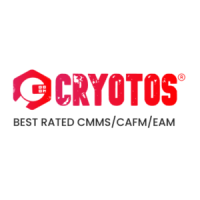Optimize your Maintenance Workflow Using CMMS and Process Mapping
Optimizing maintenance workflows is paramount for organizations seeking to improve efficiency, reduce costs, and enhance equipment longevity. A Computerized Maintenance Management System (CMMS) is an indispensable tool that facilitates this optimization. Additionally, process mapping is an effective technique used to visualize and understand the events that lead to the completion of a maintenance task. This post delves into how you can utilize CMMS and process mapping to optimize your maintenance workflow.
Understanding Maintenance Workflow
Before delving into optimization, it’s crucial to understand what a maintenance workflow is. It is a series of tasks that need to be executed in a particular sequence for successful maintenance management. It starts with a work request or work order and ends with the completion and documentation of the maintenance task. With its automated capabilities and functionalities, CMMS software can significantly streamline and enhance this workflow.
Process Mapping for Maintenance Workflow
Process mapping in Maintenance Management visually represents the steps involved in a maintenance workflow; This can involve creating flowcharts or diagrams to illustrate processes, decision points, and the flow of information. Process mapping can provide insights into potential bottlenecks, redundancies, or inefficiencies in the existing maintenance workflow.
How CMMS Software Supports Process Mapping?
Modern CMMS software comes equipped with features that support process mapping. For instance, it can:
- Provide clear visibility into the maintenance process.
- Automate scheduling of preventive maintenance tasks.
- Manage and monitor work orders.
- Enable easy access to maintenance history and documentation.
Optimizing Maintenance Workflow with CMMS and Process Mapping
Here’s how you can leverage CMMS and process mapping to optimize your maintenance workflow:
Identify and Document Current Workflow: The first step involves understanding your current maintenance workflow; This includes identifying all tasks, decisions, and personnel involved in the workflow.
Analyze the Workflow: Once you’ve mapped your current workflow, the next step is to identify inefficiencies or bottlenecks.
Implement CMMS: CMMS software can automate and streamline maintenance tasks, leading to increased efficiency. It also allows easy tracking of maintenance tasks, leading to enhanced accountability.
Measure Effectiveness: After implementing changes, monitor and measure the effectiveness of the new workflow; This could involve tracking metrics like Mean Time to Repair (MTTR), downtime, and Overall Equipment Effectiveness (OEE).
Continuous Improvement: Maintenance management is not a one-time process. Regularly review and update your workflows and processes as your organization evolves.
Remember, the goal is not just to optimize your workflow but to create a culture of continuous improvement. This way, your maintenance operations can keep up with the dynamic needs of your organization.
Implementing a robust CMMS and effective process mapping can be challenging, but the payoffs for improved efficiency, reduced downtime, and cost savings are well worth the effort. Remember to engage your maintenance team and train them to use the new tools effectively during the optimization process. Ultimately, optimized maintenance workflows lead to a more efficient, productive, and profitable operation.
How Cryotos CMMS software specifically supports optimizing maintenance workflows with real-life examples.
- Identify and Document Current Workflow: Cryotos CMMS offers a comprehensive and centralized dashboard that overviews your maintenance operations. For instance, a manufacturing plant utilizing Cryotos can view and track all ongoing and planned maintenance activities, from equipment inspections to major repairs. This visual and interactive representation of tasks makes it easy to map the current workflow.
- Analyze the Workflow: Cryotos’ reporting features streamline the analysis process. For instance, suppose a hospital’s HVAC system experiences recurrent failures. Using Cryotos, the maintenance manager can quickly pull up historical data and spot recurring issues, identifying patterns or underlying problems that might be causing inefficiencies.
- Implement CMMS: Cryotos CMMS provides dynamic features that enable the automation of tasks. For example, a hotel chain can schedule preventive maintenance for its numerous equipment and appliances spread across multiple locations. Cryotos would automate these schedules, send technicians reminders, and eliminate the possibility of missed or delayed maintenance tasks.
- Measure Effectiveness: Cryotos’ robust analytic features enable organizations to monitor metrics like Mean Time to Repair (MTTR), downtime, and Overall Equipment Effectiveness (OEE). A food processing plant, for instance, can track the time taken to repair crucial machinery, measure the downtime duration, and assess its equipment’s effectiveness; This would help them measure the impact of their maintenance strategies.
- Continuous Improvement: Cryotos CMMS isn’t just about streamlining current workflows; it’s also about fostering continuous improvement. Its intuitive feedback system enables teams to highlight issues, provide suggestions, and collaborate on improvements. For example, a technician at a factory could suggest a change in the process or a different approach to a recurring problem via Cryotos’ platform, leading to a continuous loop of improvement.
- Cryotos’ Unique Features: Cryotos brings unique features like 100% dynamic workflow templates. For instance, an automobile manufacturing company can define custom checklists for various maintenance tasks and assign them to their respective teams. This flexibility allows organizations to adapt the CMMS to their unique workflows instead of vice versa.
Cryotos also supports integration with other systems. For instance, a pharmaceutical company can integrate Cryotos with its existing Enterprise Resource Planning (ERP) system, enabling seamless data flow and holistic management.
In summary, with Cryotos CMMS, organizations across various industries can optimize their maintenance workflows and instill a culture of continuous improvement, leading to heightened efficiency and productivity.
The future trends in maintenance workflow and process mapping and how advancements will influence these in technology.
- AI and Machine Learning: Artificial Intelligence and Machine Learning are expected to impact maintenance workflow and process mapping significantly. With Cryotos, AI could predict equipment failure and suggest preventive measures. For example, predictive maintenance powered by machine learning algorithms could analyze historical data to forecast when an asset is likely to fail; This allows organizations to conduct maintenance proactively, reducing downtime and extending asset life.
- Automation & Robotic Process Automation (RPA): The future will see an increased role of automation in maintenance workflows. Cryotos’ dynamic workflows could be further enhanced by Robotic Process Automation (RPA), automating repetitive tasks, reducing human error, and freeing up technicians for more complex tasks.
- Internet of Things (IoT): IoT devices can provide real-time data on equipment performance, feeding this data into a CMMS like Cryotos to enhance maintenance schedules. For example, IoT sensors could detect unusual vibrations in a machine, automatically creating a work order in the CMMS for a technician to inspect the machine.
- Augmented Reality (AR): AR could revolutionize process mapping by providing an immersive, interactive way to visualize workflows. Using AR glasses, a technician could see a visual overlay of the maintenance procedure on the equipment, guiding them through the process. This technology could be integrated into CMMS systems like Cryotos, providing even more robust support for technicians.
- Digital Twin Technology: Digital twins are virtual replicas of physical systems. In the future, these could be used alongside a CMMS to simulate and optimize maintenance workflows before implementing them in real life.
- Blockchain Technology: Blockchain could enhance the traceability and transparency of maintenance workflows. Every task, from issuing a work order to the sign-off of a completed job, could be recorded as a block in the blockchain, creating an immutable record of the entire process.
- Sustainability Measures: As businesses increasingly aim to reduce their environmental impact, future maintenance workflows will likely incorporate sustainability measures. Cryotos could help organizations track their energy usage, waste production, and other environmental metrics, helping them make their maintenance processes more eco-friendly.
- Integration and Interoperability: The future trend lies in easily integrated systems. Cryotos, with its capabilities to integrate with other systems such as Zaphier, WhatsApp, and Niagara framework for IoT, is set to be in pace with this trend, offering organizations a truly interconnected maintenance management ecosystem.
These trends indicate that the future of maintenance workflow and process mapping is geared toward smarter, more predictive, and more efficient practices. With technological advancements, CMMS like Cryotos is set to become even more powerful tools in managing and optimizing maintenance workflows.


